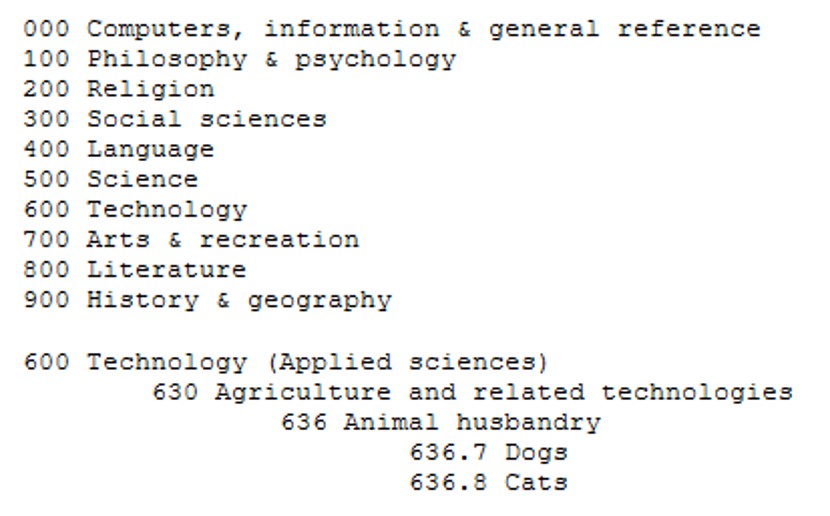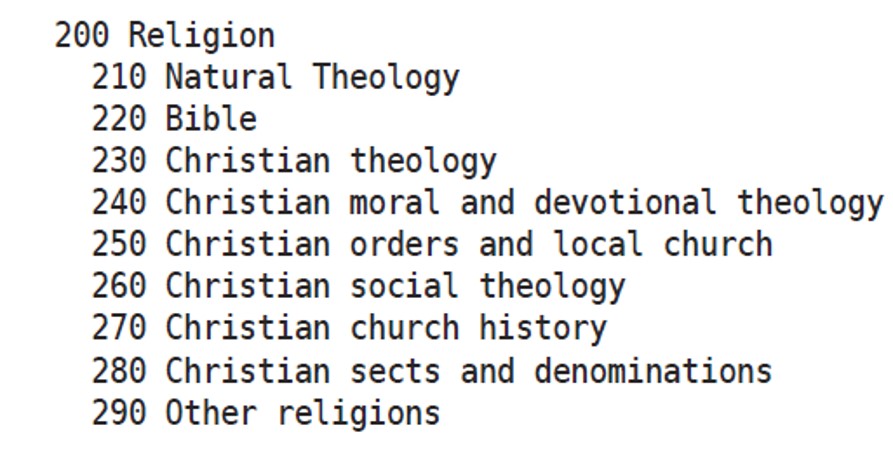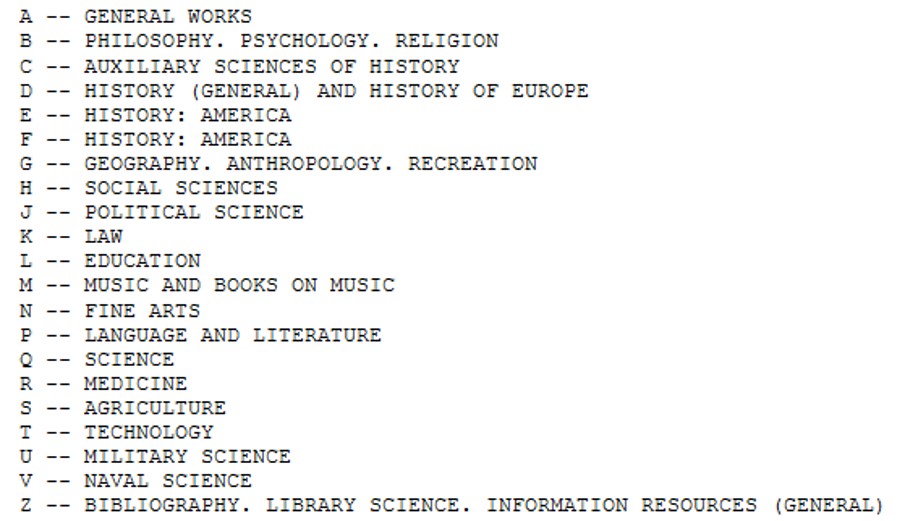25 Organizing Libraries
You might have a lot of books at home, and it would be easier to use them if they are organized. But you don’t need to use one of the standard organizing systems for libraries to do that. However, you might use a school or public library, so it will help you if you know a few things about how they are organized.
The first libraries were created almost three thousand years ago. Because of this long history, many of our modern ideas about organizing evolved from the management of documents, books, and other so-called BIBLIOGRAPHIC resources in libraries. In addition, we have learned a lot about organizing from libraries because of their large scale and complexity. You might think that a supermarket is a big organizing system because it has tens of thousands of different items in it. But libraries at big universities have many millions of items in them, so they need a more precise organizing system.
Even though we can now search library catalogs using computers, many of the library’s resources are still tangible things that have to be organized on shelves. This requires two kinds of standards. One standard defines the rules for describing the resources (the descriptions used to be on printed catalog cards, which are now on computers). Other standards contain rules for assigning things to subject categories.
Most libraries are organized using one of two standard systems of subject categories. Public libraries and small school libraries are usually organized with the Dewey Decimal Classification. University libraries and those used by research labs use the Library of Congress Classification. Both of these organizing systems have interesting histories that help us understand the categories they use.
Dewey Decimal CLASSIFICATION
Started in 1876, the DDC is used by more than 200,000 libraries in 135 countries, making it the most widely used library organizing system. The DDC is divided into ten main numbered categories, which together cover the entire world of knowledge. Each main category is then divided into ten divisions, and each division into ten sections. In this way the DDC divides subjects into smaller and smaller categories by adding more decimal places to the category number.
Because the DDC was developed in the late 19th century, many of the categories it started with don’t fit well today because of cultural changes over time. You can see that here that “dogs” and “cats” are organized along with animals used in farming because today’s concept of “pet” wasn’t commonly used back then.

Another way in which the DDC is biased was caused by where it was developed. Melvil Dewey wanted to develop a system that could organize all knowledge. However, because he created the system while working for Amherst College, which at the time had a primary purpose to train Christian ministers, a system designed to organize the books in the Amherst library has a lot of bias toward Christianity.

Do you think that a system of categories for organizing books should be “natural” in the sense that it matches the organization of people into world religions? How well does the Dewey Decimal Classification do this?
LIBRARY OF CONGRESS CLASSIFICATION (LCC)
The United States Library of Congress was established in 1800 with a very practical and narrow focus to support the process of governing and making laws. But the library got off to a bad start when the British burned it down (along with the White House) during the “War of 1812.” The library was restarted with former President Thomas Jefferson’s personal library, which had a much broader scope of books in its collection. So a small scope classification system in the original library needed to be replaced with one that had much broader scope.
Like the DDC, the LCC shows its bias toward the place where it was created. For example, all of European history goes into category D, but American history is organized in both E and F categories. Likewise, even though Naval Science might seem to be part of Military Science, the LCC gives Naval Science its own category. This was to make sure that the library collected resources that might prevent the library from being burned down in another naval invasion!
Also like the DDC, the LCC is a deep hierarchy, with 21 top level categories, identified by letters instead of numbers like the DDC. Each top-level category is further divided, but in a much less controlled way, first by adding on letters and then by adding decimal numbers that can have decimal places.

Here’s a example explaining the subject hierarchy for this specific book:

